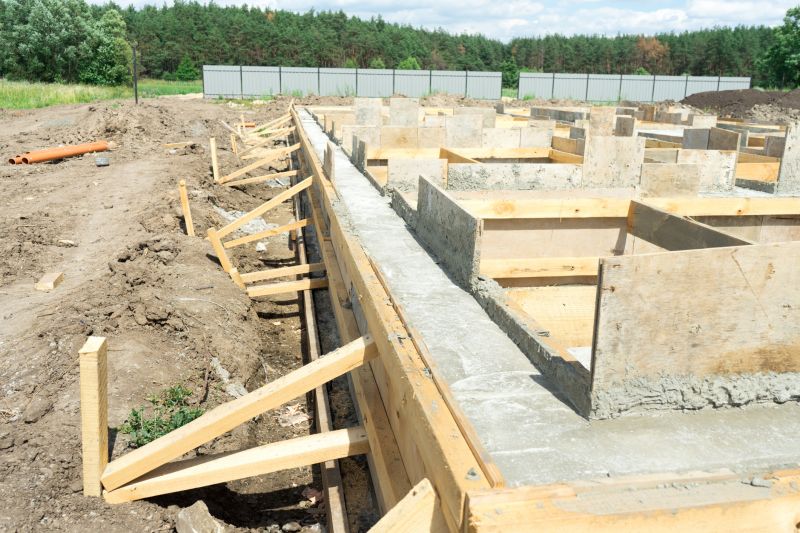Optimal Timing for Concrete Footer Installation
Choosing the optimal time for concrete footer installations is essential for ensuring durability and proper curing. Weather conditions, temperature, and soil stability significantly influence the success of the project. Proper planning can prevent issues such as cracking, shifting, or water infiltration.
Spring and early fall are typically the best times for concrete footer installation due to moderate temperatures and lower humidity levels.
Concrete cures best when temperatures are between 50°F and 85°F. Extremes outside this range can hinder curing and compromise strength.
Avoid installation during rain or snow, as excess moisture can weaken the concrete and delay curing times.
Stable, dry soil is preferable. Wet or frozen ground can affect the footing’s stability and adhesion.

Ways to make Concrete Footer Installations work in tight or awkward layouts.

Popular materials for Concrete Footer Installations and why they hold up over time.

Simple add-ons that improve Concrete Footer Installations without blowing the budget.

High-end options that actually feel worth it for Concrete Footer Installations.
Concrete footer installations are a foundational element in construction projects, providing stability and support for structures. The timing of installation impacts the concrete’s curing process, which is critical for achieving maximum strength and longevity. Properly timed installations can reduce the risk of future issues such as cracking, shifting, or water damage. Weather conditions, especially temperature and moisture levels, play a vital role in the curing process. Cold weather can delay setting times and weaken the concrete, while excessive heat can cause rapid evaporation, leading to surface cracking.
Statistics indicate that concrete cures optimally within specific temperature ranges, and deviations can lead to increased maintenance costs or structural problems. Planning installations during seasons with predictable weather patterns ensures consistent results and reduces delays. Additionally, soil conditions must be considered to prevent movement or instability of the footings, which can compromise the entire structure’s integrity.

Finishes and colors that play nicely with Concrete Footer Installations.

Little measurements that prevent headaches on Concrete Footer Installations day.

A 60-second routine that keeps Concrete Footer Installations looking new.
| Factor | Best Conditions |
|---|---|
| Temperature | 50°F to 85°F |
| Humidity | Moderate levels |
| Precipitation | Dry weather, no rain |
| Soil Moisture | Dry and stable soil |
| Season | Spring or early fall |
| Wind | Low wind conditions |
| Sunlight | Moderate sunlight exposure |
| Ground Freezing | Avoid during frozen ground |
For those considering concrete footer installations, understanding the ideal timing can lead to longer-lasting, more stable foundations. Proper planning around seasonal weather patterns and soil conditions ensures optimal curing and reduces potential issues. If interested in scheduling an installation, filling out the contact form provides an opportunity to discuss project specifics and timing preferences.
